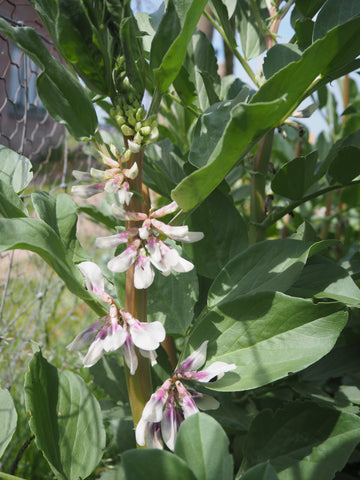If you want to carry on eating from the garden don’t let the onset of winter stop you. Winter gardening can be every bit as rewarding as summer gardening. It will also allow you to grow something new and provide an excuse to get off the sofa and enjoy the outdoors.

Winter gardening is more about prep for very early spring crops. Sowing in November will take the pressure off in spring. Getting as much planted as you can in November, will save you time when temperatures rise again. There is another advantage though. The roots of your plants will help to keep the soil together and stop it being eroded by harsh weather. Soil can really degrade if left bare during harsh winter storms and planting helps to prevent this.
So, avoid disappointment by appreciating that most of the crops will not be ready for eating in the winter months and spring is when you’ll get your reward. However some, like winter salads, take a matter of weeks and pak choi as a cut and come again can be ready for eating in little over a month.
What to Plant in November
So here is our guide to what to plant in November. Out first seven candidates can be planted outside – either direct into the ground or into Rootrainers before being transplanted.
Sowing Vegetables Outside in November
-
Spring Cabbage (towards the start of the month)

- Peas
- Broad Beans
- Onion sets
- Garlic
- Shallots sets
- Asparagus Crowns
Peas and broad beans will not do too much over winter but if they are in the ground, it allows them to get going the very second conditions improve. This will give you a much earlier harvest next Spring. You could give them extra encouragement and protect them against frost by covering them with an Easy Tunnels, Kitchen garden Cloche or sowing them in a cold frame.
Onions, garlic and shallots sets - act quick before the ground is too hard to dig. Plants such as garlic actually need a sustained period of cold to divide into bulbs so now is the perfect time to plant.
Don’t forget, asparagus crowns. So if you have harboured the desire to have an asparagus patch now is the time to start it. These are a proper long term investment as it will be 2 years before you can eat them. But the sooner you start, the sooner that will come round!
Sowing Inside in November
Some plants won’t appreciate the cold so you will need to sow them inside. A kitchen windowsill or spare room or in a heated greenhouse. Some are a little more forgiving and will grow well in a plant house outside. Boost your chances of success with a Lightbooster Plant house - the special reflective backing will increase the light your plants receive allowing them to grow quicker during the months with low light.
So the next 3 suggestions prefer a cozier life but won’t make you wait until spring to eat them
For Winter salads drop into your garden centre and check their winter selections – it is important to get the right variety.
Sowing Fruit Outside in November
Winter is also the perfect season to plant some fruit trees or bushes, such as:
-
Rhubarb crowns

- Raspberry canes
- Strawberry runners
- Gooseberry bushes
- Blackberries
- Blueberry bushes
- Damson or Plums
- Pear
- Apple
- Hazel
How to Plant Fruit Trees
Check here for a full guide to planting bare root trees.
If you are growing in containers then Vigoroot Pots are ideal for planting fruit trees, particularly soft fruits like blueberries. The problem with fruit trees is that if they ever become pot bound they will stop fruiting and will never produce fruit agian. This is a survival response to not waste energy on producing seeds when they do not have the resources to keep growing. With a Vigoroot Pot the roots 'air prune' so that they never become pot bound. Watch Pippa Green Wood explain more here.
Think Ahead to Plant Protection

Remember to put some plant protection on your Christmas list so that you can protect your berries from pests when the tie comes. A Round Fruit Cage is great for gooseberries, blueberries and currants and a Long Fruit Cage is perfect for a row of raspberries. An Easy Net Tunnel is ideal for strawberries as it will shade them from the hot summer sun.
That’s 20 plants – and we aren’t expecting you to plant them all. But if you were thinking that the gardening season is over then hopefully this will help you reconsider…


